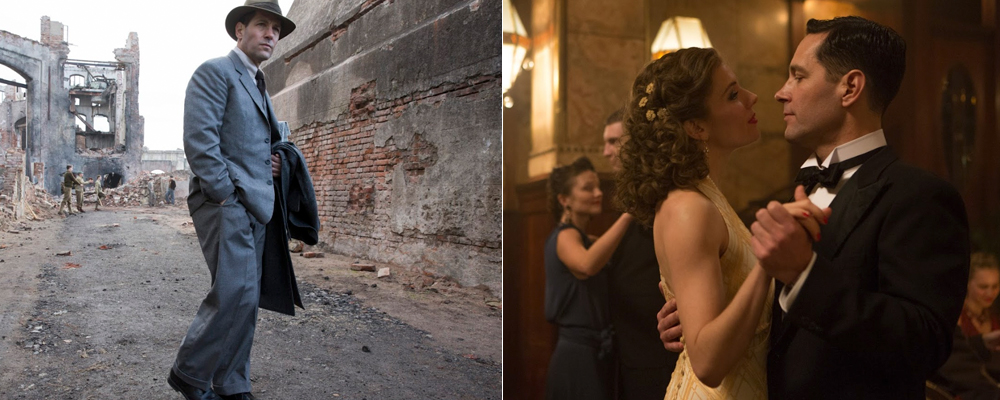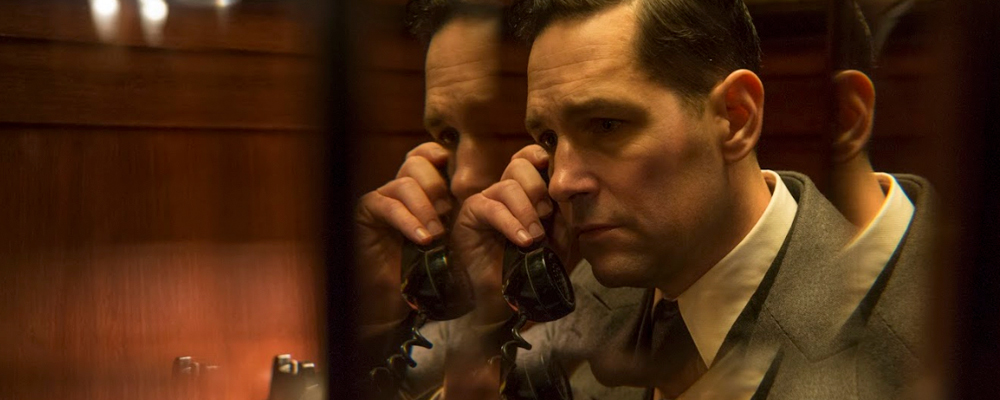‘The Catcher Was a Spy’ Attempts to Crack the Mystery of Baseball Player Turned Agent
Alci Rengifo
What a curious thing when a spy is so elusive, not even a movie about his life can come to any conclusions. “The Catcher Was a Spy” attempts to dramatize some of the life of Moe Berg, a major league baseball player who worked for the Office of Strategic Services during World War II as a double agent. The focus here is on a mission given to Berg to assassinate a German scientist suspected of trying to make Nazi Germany’s first atomic bomb. Interesting premise, but delivered with a rather stale protagonist. Berg is so mysterious, so cryptic, that by the end of the movie we still know next to nothing about the man. For an hour and thirty minutes we essentially follow a shadow.
The movie opens at the dawn of World War II as Berg (Paul Rudd) plays major league baseball as a catcher. He’s not the best, but he is the most intelligent player around. A graduate of Columbia and Princeton, he speaks several languages and spends his spare time at the library. Berg is in a relationship with Estella (Sienna Miller), but keeps his distance, even refusing to take her along to Japan during an exhibition baseball tour. While in Japan Berg decides to secretly take footage of military docks, then hands the footage over to the OSS. Apparently he considers himself a patriot, and once the Japanese attack Pearl Harbor he is given a job as an operative. His superior, William J. Donovan (Jeff Daniels) soon brings him a delicate assignment. The Manhattan Project is in full swing in trying to make a nuclear weapon, but U.S. intelligence suspect Nazi Germany is also trying to make its own bomb. Berg is tasked with finding a scientist named Werner Heisenberg (Mark Strong) in order to get close and find out if he is developing a bomb for Hitler. If Heisenberg confirms it, then Berg is to immediately kill him.
Who was Moe Berg is the question that haunts the entire movie from beginning to end. Director Ben Lewin made another interesting character study this year, the completely ignored “Please Stand By,” starring Dakota Fanning as a troubled Trekkie trying to get to Los Angeles to submit a fan script at Paramount. In that fictional work, Lewin seemed to always know who the character was and what made them tick. “The Catcher Was a Spy” introduces us to a very intriguing figure, but keeps as much of a distance as he himself does from others. Berg as played by Paul Rudd speaks in a reserved, careful tone, he explains everything away with serious one liners (“I would rather just go alone”). He does things that can be quirky, but only reveal a bit about his ego, such as when he tells Japanese officials in a prepared speech to laugh when he finishes so his teammates can be impressed. Why he is such a patriot, dutifully singing along to “The Battle Hymn of the Republic” at a Princeton gathering, is never explored. He simply is as he is. His own transition from baseball player to spy is a quick flip. He goes to Japan, takes out his camera and captures some footage while disguised in local garb. But what inspired him? Maybe it was a conversation with a local friend who tells him war is in the winds. The film seems to hint that it was because he was so smart that espionage seemed like a fun thing to do. But there is no life to this man. He keeps his secrets guarded even from the movie. Donovan bluntly asks Berg if he is gay, to which Berg replies, “I’m good at keeping secrets.” Alright then.
Because Berg is so elusive, the spy material in the movie is pretty standard. A circle composed of Donovan, a scientist named Samuel Goudsmit (Paul Giamatti) and another military man, Robert Furman (Guy Pearce), give Berg his mission and tag along to Italy to find another scientist who might know if Heisenberg is making a bomb or not. This is a formidable cast and they give efficient performances, but the material itself blandly moves from point A to B. They arrive in Italy, shoot down some German bodyguards, chat with the Italian and then Berg is off to chat with Heisenberg at a dinner party. There is an odd moment where Berg calls Estella, telling her he wants to hear her voice. Later we find out he never saw her again. Did he actually love her? The screenplay by Robert Rodat never ponders the question. The assassination mission becomes anti-climactic, with little suspense or moral tension. Berg is doubtful about the need to kill Heisenberg, but scientists are apparently such cool players they speak to each other in code using chess board pieces. Although there is a good scene where a woman played by Connie Nielsen condemns Heisenberg publicly for claiming to be apolitical in brutally political times. Because we know Hitler never had an atomic bomb we are certain that whatever Berg does, blocking the Nazi program is a fait accompli, so the film must find tension and meaning that goes beyond the main premise, especially since there was no grand showdown or heist. Berg simply disappears back into the shadows, with extra information before the credits informing us that there’s not much else to Berg because we don’t know more than what you saw on screen.
“The Catcher Was a Spy” is an efficiently produced enigma that presents actors in WWII-era clothing walking around and reciting dialogue, but the story lacks more bold speculation. If there are brilliant movies about historical characters we know little about from nearly 200 years ago, surely Moe Berg deserves a little more.
“The Catcher Was a Spy” releases June 22 in select theaters.



